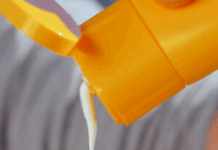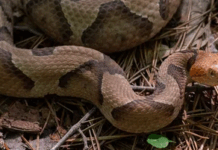True and fall armyworms have been a nuisance to crop production in Kansas over the past 40 years. Kansas State University crop entomologist Jeff Whitworth said these pests have once again made their presence known in 2024, noting that their similar developmental schedules and rapid life cycles heighten crop damage.
“Right now, both species are the same size larvae,” he said. “The eggs take approximately 3-5 days to hatch. Then the larvae will emerge and start feeding immediately for about two weeks and then pupate for 6-7 days.”
“Then, they are adults and start the cycle all over again. It is about a month from egg to egg; the feeding stage and larval stages last for two weeks of this cycle.”
While fall armyworms may prefer soybeans this time of year, Whitworth said they can become a concern in any kind of field still growing until they migrate south.
True and fall armyworms have been a nuisance to crop production in Kansas over the past 40 years. Kansas State University crop entomologist Jeff Whitworth said these pests have once again made their presence known in 2024, noting that their similar developmental schedules and rapid life cycles heighten crop damage.
“Right now, both species are the same size larvae,” he said. “The eggs take approximately 3-5 days to hatch. Then the larvae will emerge and start feeding immediately for about two weeks and then pupate for 6-7 days.”
“Then, they are adults and start the cycle all over again. It is about a month from egg to egg; the feeding stage and larval stages last for two weeks of this cycle.”
While fall armyworms may prefer soybeans this time of year, Whitworth said they can become a concern in any kind of field still growing until they migrate south.
“They feed in soybeans, wheat, sorghum, corn – any of our crops,” he said. “Later on, we worry about them in brome and wheat, but now it is soybeans. However, once they pupate and the adults emerge, they should fly southward for the winter. Then growers have one less pest causing problems.”
On the other hand, true armyworms may overwinter in the state. In the fall, they seek out various new plant growth to eat.
“It is going to be another week or so, and then they are going to start feeding voraciously on whatever crops are available,” Whitworth said. “One of the key crops is lush, green wheat.”
Another natural defense growers have against true armyworms includes cold temperatures, Whitworth said, reminding them this pest can still be active late in the year.
“They will keep going through life cycles until it gets too cold – and by too cold, I mean down into the mid-20s for an hour or two at night,” he said. “But I have seen them feeding in November until a crop matures and turns brown.”
To mitigate armyworm infestations, Whitworth recommends growers delay winter wheat planting as late as possible to limit the amount of vegetation available for the pest to feed on.
“Plant wheat as late as agronomically possible for your area to help avoid these pests,” he said. “Armyworms go out and find just about any grass; they can feed on lawns, brome and especially that young wheat.”
Before treating an armyworm infestation with a recommended insecticide, producers should double-check their treatment thresholds and scout fields to determine the size of the pest, according to Whitworth.
“If they are an inch long, they are relatively mature worms, so I would not waste money or spray trying to kill them,” he said. “If they are small, a producer is probably justified treating them.”
The key to a successful armyworm insecticide treatment involves mixing the chemical with sufficient water so it can get through foliage and make contact with the pest, Whitworth said.




